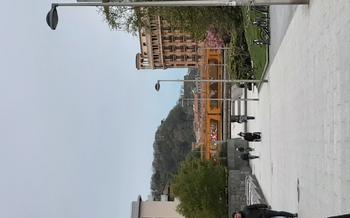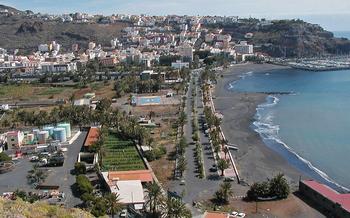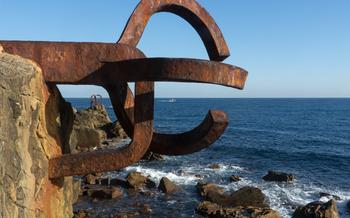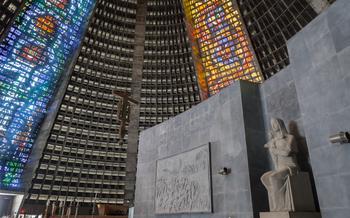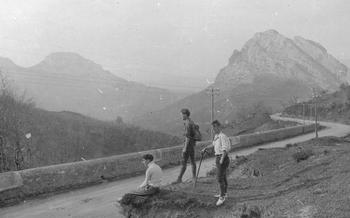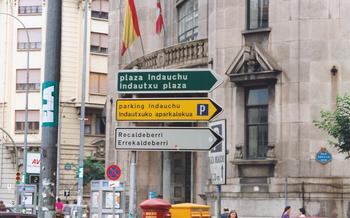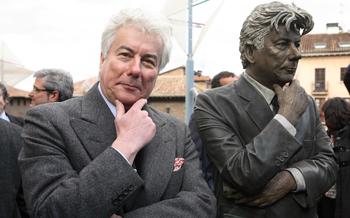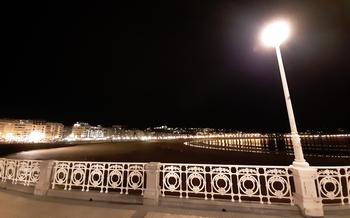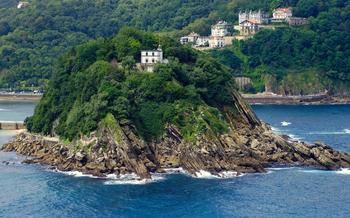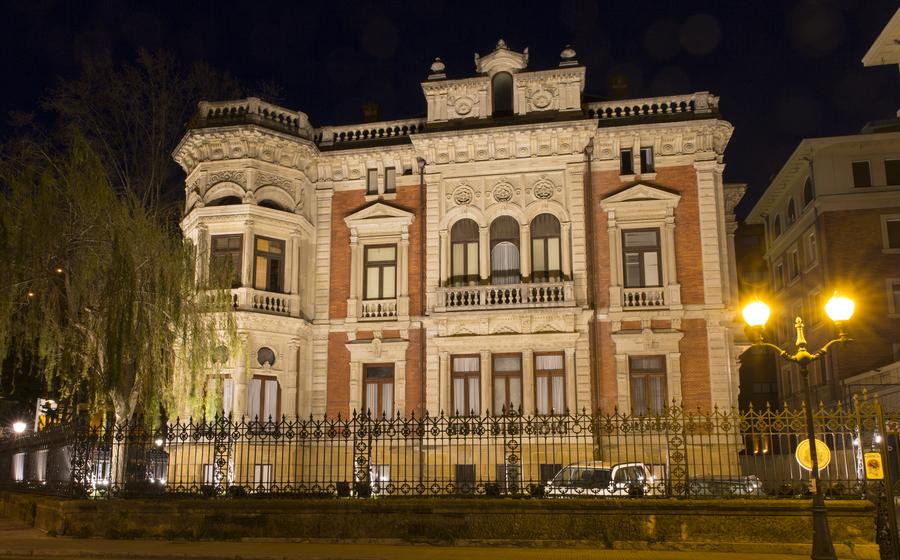
Santimamiñe Caves Interpretation Center
- The Santimamiñe Caves: A Journey Through Time
- Location and Accessibility
- Visiting Hours and Admission Fees
- Guided Tours and Reservations
- What to Expect During the Tour
- Exploring the Caves
- The Santimamiñe Caves Museum: Unveiling the Cave's Secrets
- Paleontological and Archaeological Significance
- Conservation and Sustainability
- Nearby Attractions and Activities
- Planning Your Visit
- Cultural and Historical Context
- Solo Travelers and Group Excursions
- Photography and Social Media
- Insider Tip: Discover the Hidden Gem
The Santimamiñe Caves: A Journey Through Time
Deep within the heart of the Basque Country, nestled in the foothills of the majestic Sierra de Sollube, lies a hidden treasure – the Santimamiñe Caves. These awe-inspiring caverns, adorned with breathtaking geological formations and ancient artistic masterpieces, have captivated explorers, archaeologists, and art enthusiasts for centuries. Journey back in time as we delve into the history, significance, and ongoing research that make these caves a must-visit destination for anyone seeking to unravel the mysteries of our past.
The Santimamiñe Caves, with their intricate network of chambers and galleries, have been shaped over millennia by the relentless forces of nature. Water seeping through the limestone bedrock has carved out impressive stalactites and stalagmites, creating a subterranean wonderland that resembles a sculptor's masterpiece. But beyond their natural beauty, these caves hold a profound significance as a repository of prehistoric art.
The walls of the Santimamiñe Caves are adorned with hundreds of paintings and engravings, believed to have been created by our ancestors during the Upper Paleolithic era, some 14,000 years ago. These remarkable artworks depict a diverse range of subjects, from animals such as horses, bison, and deer to abstract symbols and human figures. They offer a glimpse into the lives, beliefs, and artistic expressions of our distant forebears, providing valuable insights into the development of human culture and creativity.
Archaeological excavations at Santimamiñe have unearthed a wealth of artifacts, including stone tools, animal bones, and remnants of hearths, further enriching our understanding of the caves' inhabitants. Ongoing research, conducted in collaboration with prestigious universities and institutions, continues to shed light on the chronology, techniques, and symbolism of the cave art, revealing new secrets about the lives of our prehistoric ancestors.
Location and Accessibility
The Santimamiñe Caves are located in the municipality of Kortezubi, in the province of Biscay, in the Basque Country of Spain. The exact address of the caves is Avenida de la Cantera 1, Kortezubi, 483The GPS coordinates for the caves are 43°19'37"N, 2°50'39"W.
The Santimamiñe Caves are easily accessible by public transportation. The nearest train station is in the town of Gernika-Lumo, which is about 15 kilometers away. From the train station, you can take a bus or taxi to the caves.
If you are driving to the caves, you can take the A-8 motorway and exit at Gernika-Lumo. From there, follow the signs to Kortezubi. Once you reach Kortezubi, follow the signs to the caves.
There is ample free parking available at the caves. There are also several hotels and restaurants in the area.
Visiting Hours and Admission Fees
The Santimamiñe Caves are open to the public year-round, but visiting hours vary depending on the season. During the summer months (June to September), the caves are open from 10:00 am to 7:00 pm, while in the winter months (October to May), they are open from 10:00 am to 5:00 pm.
Ticket prices for adults are €10, for children (6-12 years old) €5, and for groups of 10 or more, €8 per person. Discounts are available for students and seniors upon presentation of valid identification.
To ensure a smooth and enjoyable visit, it is highly recommended to make advance reservations, especially during peak season. Online booking is available through the official website of the Santimamiñe Caves Interpretation Center.
Guided Tours and Reservations
Guided tours are an excellent way to explore the Santimamiñe Caves and delve into their history, significance, and captivating features. These tours are available in various languages, ensuring that international visitors can also participate and gain insights into the caves' wonders.
To ensure a spot on a guided tour, advance reservations are highly recommended, especially during peak tourist season or for large groups. Online booking options are available on the Santimamiñe Caves Interpretation Center's official website, allowing you to secure your place and choose your preferred tour time.
Guided tours typically begin at designated meeting points, and group sizes are kept small to ensure a personalized experience. This allows visitors to interact with the guide, ask questions, and receive detailed explanations about the caves' formations, artwork, and cultural importance.
What to Expect During the Tour
During the guided tour, you will embark on a captivating journey through the Santimamiñe Caves, spanning approximately 45 minutes. Knowledgeable guides will lead you through the labyrinthine passages, shedding light on the cave's fascinating history and geological formations. Discover the awe-inspiring main chambers, each adorned with unique stalactites and stalagmites that have been sculpted by water over millennia. Marvel at the intricate prehistoric paintings and engravings that adorn the cave walls, offering a glimpse into the lives of our ancestors.
Safety is paramount during the tour, and visitors are equipped with helmets and flashlights to navigate the dimly lit passages. The caves are accessible for visitors of all ages, although some sections may require a bit of agility. Photography and videography are permitted, but the use of flash is prohibited to preserve the integrity of the cave's delicate artworks.
Exploring the Caves
The guided tour takes you through the main chambers and galleries of the Santimamiñe Caves, showcasing the stunning geological formations and awe-inspiring prehistoric art. Marvel at the towering stalactites and stalagmites that adorn the cave walls, creating a mesmerizing display of nature's artistry. Admire the intricate rock formations that have been shaped by water erosion over thousands of years, forming unique and captivating structures.
As you delve deeper into the caves, you'll encounter the remarkable prehistoric paintings and engravings that have made Santimamiñe famous. These ancient works of art, created by early humans who inhabited the region, offer a glimpse into their lives, beliefs, and artistic expressions. Discover the symbolic representations of animals, human figures, and abstract patterns, each telling a story about the people who once called these caves home.
The Santimamiñe Caves Museum: Unveiling the Cave's Secrets
Enrich your visit to the Santimamiñe Caves by exploring the on-site museum, a treasure trove of knowledge and history. Delve into the fascinating world of cave exploration and discover the secrets held within these ancient chambers. Through engaging exhibits, interactive displays, and educational materials, the museum offers a deeper understanding of the caves' origins, geological formations, and the remarkable prehistoric art that adorns their walls.
Immerse yourself in the interactive experiences that bring the caves' history to life. Handle replicas of ancient tools and artifacts, uncovering the ingenuity and craftsmanship of our ancestors. Learn about the ongoing research conducted by archaeologists and paleontologists, shedding light on the lives and behaviors of prehistoric humans who inhabited these caves.
Don't miss the opportunity to take home a piece of your Santimamiñe experience. The museum's gift shop offers a range of souvenirs, including replicas of cave paintings, books on Basque history and culture, and locally crafted products. Support local artisans and contribute to the preservation of this unique cultural heritage.
Paleontological and Archaeological Significance
The Santimamiñe Caves hold immense paleontological and archaeological significance, shedding light on the evolution of human societies and the region's prehistoric past. Discoveries of ancient tools, bones, and artifacts have provided valuable insights into the lives and activities of our ancestors. These findings have contributed to a deeper understanding of hunting, gathering, and artistic practices during the Upper Paleolithic period. Ongoing research and collaborations with universities continue to uncover new evidence, further enriching our knowledge of this fascinating era.
Conservation and Sustainability
The Santimamiñe Caves are not only a site of cultural and historical significance but also a valuable natural environment that requires protection. Conservation efforts are paramount to preserving the cave's unique geological formations and prehistoric art for future generations.
To ensure sustainable tourism, various measures have been implemented. Visitor numbers are regulated to minimize the impact on the delicate cave ecosystem. Guided tours are conducted in a responsible manner, ensuring that visitors do not touch or damage the cave walls or formations.
Environmental education programs are also conducted to raise awareness among visitors about the importance of protecting the caves' natural heritage. These programs emphasize the need for responsible behavior, such as not littering or disturbing the wildlife that may inhabit the caves.
The caves' management also collaborates with scientific institutions to conduct ongoing research and monitoring. This research helps to better understand the cave's geology, archaeology, and ecology, informing conservation strategies and ensuring that the caves remain a valuable resource for scientific study.
Nearby Attractions and Activities
Beyond the captivating Santimamiñe Caves, the surrounding region offers a wealth of attractions and activities to enrich your Basque adventure. Delve deeper into the history of human evolution by exploring other prehistoric caves in the vicinity, each holding unique treasures from the past.
Immerse yourself in the region's stunning natural beauty by embarking on scenic hiking trails that lead to breathtaking viewpoints. Admire the panoramic vistas of the Basque countryside, where rolling green hills meet the azure waters of the Bay of Biscay.
Indulge in the region's culinary delights by savoring traditional Basque gastronomy. Delight your palate with pintxos, small plates of delectable Basque tapas, or savor a hearty meal at a local restaurant, where fresh, seasonal ingredients take center stage. Discover the secrets of Basque cuisine through cooking classes, learning to prepare traditional dishes using local produce and flavors.
Planning Your Visit
When planning your visit to the Santimamiñe Caves, careful consideration should be given to the time of year, packing essentials, and appropriate clothing. The best time to visit is during the spring or fall months when the weather is pleasant and crowds are fewer. During the summer, temperatures can soar, making the caves uncomfortably warm and humid. In the winter months, the caves remain open, but the surrounding landscape may be covered in snow and ice, making accessibility more challenging.
Pack comfortable footwear with good traction, as the cave floor can be slippery in some areas. A light jacket or sweater is recommended as the temperature inside the caves remains relatively cool throughout the year. Don't forget your camera to capture the stunning beauty of the rock formations and prehistoric art, but be mindful of the photography guidelines to ensure the preservation of this natural wonder.
Cultural and Historical Context
The Santimamiñe Caves are deeply embedded in the cultural and historical tapestry of the Basque Country. The Basque people, with their unique language and traditions, have inhabited this region for centuries, leaving an indelible mark on its identity. The caves themselves hold a special place in Basque mythology and folklore, as they are believed to be the dwelling place of mythical creatures known as "lamiak" or "sorginak" (witches). These legends and beliefs have been passed down through generations, adding to the mystique and allure of the caves.
Historically, the Basque Country has played a significant role in the development of the Iberian Peninsula. The region has a rich maritime history, with Basque sailors and explorers venturing out into the Atlantic Ocean and beyond, establishing trade routes and contributing to the growth of global commerce. The Basque people have also been renowned for their skills in metallurgy, shipbuilding, and the arts, leaving a lasting legacy on the region's cultural heritage.
Solo Travelers and Group Excursions
Whether you're a lone explorer or traveling with a group, the Santimamiñe Caves offer a unique and enriching experience. For solo travelers, the caves provide an opportunity for self-discovery and contemplation. Take your time to wander through the chambers, marveling at the ancient art and absorbing the tranquility of the underground world. Don't hesitate to engage with other visitors or strike up conversations with the friendly staff, who are always happy to share their knowledge and insights.
For group excursions, the caves present an excellent opportunity for team building and shared experiences. Work together to solve the riddles of the past as you explore the hidden corners of the caves. Choose from a variety of guided tours tailored to different interests, such as history, archaeology, or geology. Group discounts are available, making it an affordable and memorable outing for friends, families, or colleagues.
The caves are also accessible for travelers with disabilities. Specially designed ramps and walkways allow wheelchair users to navigate the caves with ease. Assisted tours are available upon request, ensuring that everyone can enjoy the wonders of this prehistoric sanctuary.
Photography and Social Media
The Santimamiñe Caves offer a photographer's paradise, with their stunning rock formations, vibrant colors, and prehistoric art. While capturing the beauty of the caves is encouraged, it's important to adhere to the guidelines and regulations in place. Flash photography is strictly prohibited to preserve the integrity of the paintings and engravings. Instead, use natural light or a tripod to stabilize your camera for low-light shots.
Don't miss the opportunity to share your awe-inspiring images and experiences with the world on social media. Use hashtags like #SantimamiñeCaves, #BasqueCountry, and #PrehistoricArt to connect with fellow travelers and enthusiasts. Remember to tag the official social media handles of the Santimamiñe Caves Interpretation Center for a chance to be featured on their platforms.
Insider Tip: Discover the Hidden Gem
Beyond the captivating caves, the surrounding region offers a treasure trove of hidden gems waiting to be explored. Venture off the beaten path to discover lesser-known caves and rock formations that hold their own unique charm. Immerse yourself in the vibrant Basque culture by attending local festivals and events, where you can witness traditional dances, music, and the famous Basque pelota game. Don't miss the opportunity to savor the region's culinary delights, from fresh seafood to mouthwatering pintxos (Basque tapas) in nearby villages. Embrace the warmth and hospitality of the Basque people as you explore this enchanting corner of Spain.
